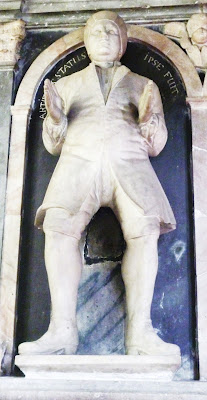We are often asked about where Bendigo fought in and around Nottingham.
In Nottinghamshire, from what we have discovered, Bendigo fought at Sunrise Hill in Bestwood (known as Bendigo’s Ring), Wilford Hill (before the building of the cemetery), Strelley Woods and near to The Traveller’s Rest Inn on Mapperley Plains.
It is also recorded that Bendigo fought Bill Moulds (known as Winterflood) in Bulwell Forest in October 1833.
As his fame and reputation grew, his fights were arranged further afield. We know he fought at Chapel-en-le-Frith in the Peak District, Selby in Yorkshire, Oxfordshire and Mildenhall in Suffolk.
A Developing Sport
Prize-fighting (or pugilism) was closely linked to both wrestling and fencing.
As the sport developed in England, it was one of the first to have a written code of rules, from 1743. Crowds of up to 10,000 would walk long distances to see a fight.
Prize-fighting was patronized by the nobility and huge sums were gambled on fights. In 1786 the Duke of York and the Prince of Wales were among the biggest gamblers.
These events took place in the open air and often organised on private estates. The precise location was often chosen by the nature of the landscape, using the contours of the land to create a natural amphitheatre to allow for spectators.
Thomas Parkyns and Bunny Park
In Nottinghamshire, Sir Thomas Parkyns of Bunny in Nottinghamshire was an enthusiast of prize-fighting. He used his land for an annual wrestling match since the early 1700s.
Sir Thomas Parkyns even published an early account of boxing in 1713. He even practised the techniques he described. It was a manual of wrestling and fencing, Progymnasmata: The inn-play, or Cornish-hugg wrestler.
The objective of Cornish wrestling is to throw the opponent and cause them to land as flat as possible on their back. Each of the wrestlers wears a ‘jacket’ of tough make and material, enabling them to better grip their opponent. Grabbing of the opponent’s or your own arms, wrists or fingers is forbidden as well as holding below the waist.
Several prize-fighters have also taken part in Cornish Wrestling, including Tom Molyneaux the American former slave came to England in 1809 and fought from 1810 to 1815. He famously fought Tom Cribb, the then Champion of England. He then toured Scotland and Ireland where he died at Galway Ireland in 1818, aged 34.
Parkyns recommends to his readers throwing contentious persons over their heads, with practical instructions. In the course of the work he acknowledged obligations to Isaac Newton, for his lectures at Trinity College, to Mr Cornish, his wrestling master at Gray’s Inn.
Parkyns annual wrestling match in Bunny Park included many of his servants who had beaten him in bouts. The competition that he founded continued in Bunny Park until 1810.
On his death in 1741, Parkyns was buried in the chancel of Bunny Church, where there a figure of him was in the act of wrestling. It is now by the north wall of the church, following the restoration of it in 1912.
Sir Thomas Parkyns (1664–1741) of Bunny, in a wrestler’s stance. He designed and built his own monument for St Mary the Virgin Parish Church in Bunny.
Photo credit https://tonyshaw3.blogspot.com
